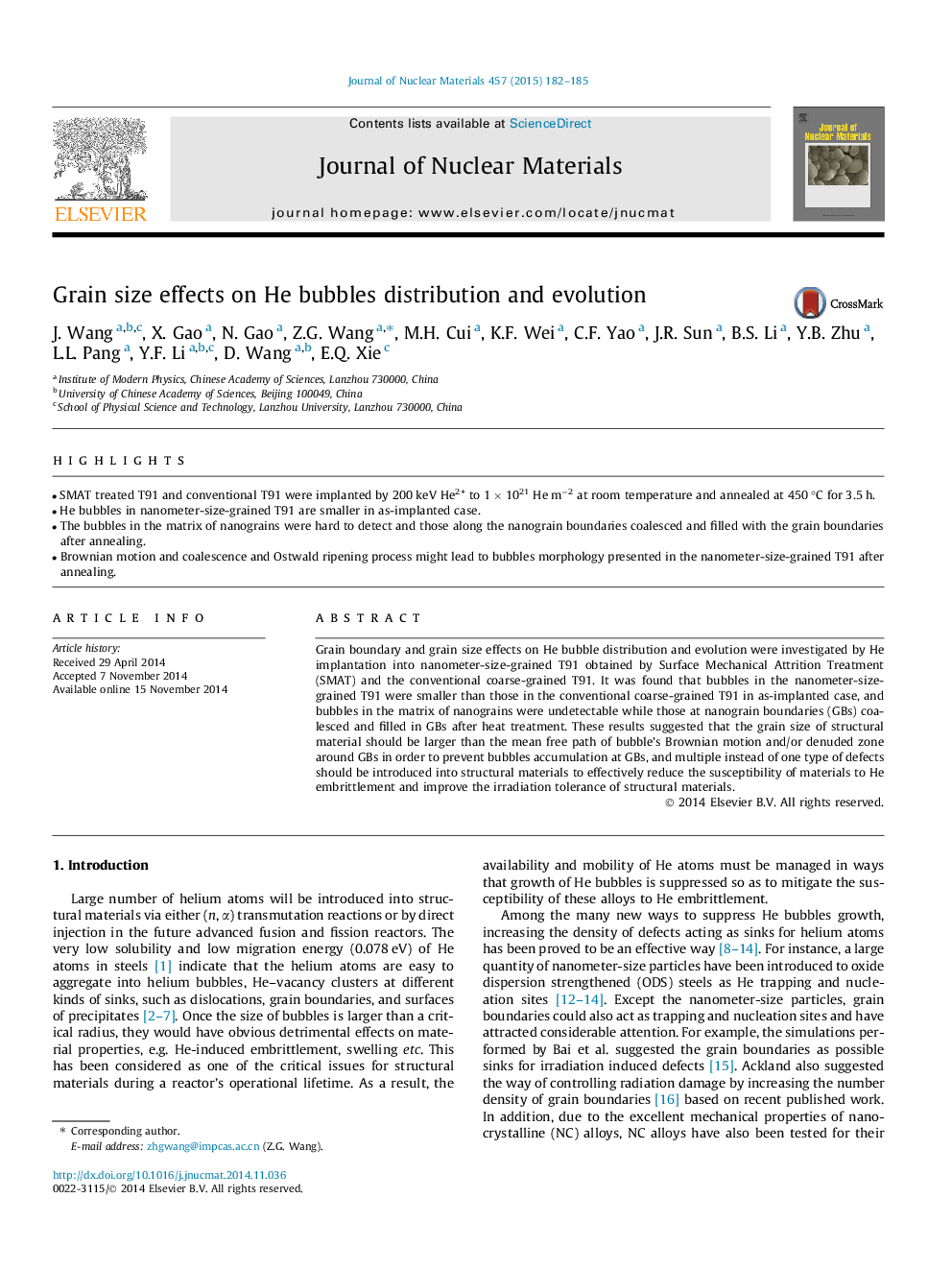| Article ID | Journal | Published Year | Pages | File Type |
|---|---|---|---|---|
| 1565042 | Journal of Nuclear Materials | 2015 | 4 Pages |
•SMAT treated T91 and conventional T91 were implanted by 200 keV He2+ to 1 × 1021 He m−2 at room temperature and annealed at 450 °C for 3.5 h.•He bubbles in nanometer-size-grained T91 are smaller in as-implanted case.•The bubbles in the matrix of nanograins were hard to detect and those along the nanograin boundaries coalesced and filled with the grain boundaries after annealing.•Brownian motion and coalescence and Ostwald ripening process might lead to bubbles morphology presented in the nanometer-size-grained T91 after annealing.
Grain boundary and grain size effects on He bubble distribution and evolution were investigated by He implantation into nanometer-size-grained T91 obtained by Surface Mechanical Attrition Treatment (SMAT) and the conventional coarse-grained T91. It was found that bubbles in the nanometer-size-grained T91 were smaller than those in the conventional coarse-grained T91 in as-implanted case, and bubbles in the matrix of nanograins were undetectable while those at nanograin boundaries (GBs) coalesced and filled in GBs after heat treatment. These results suggested that the grain size of structural material should be larger than the mean free path of bubble’s Brownian motion and/or denuded zone around GBs in order to prevent bubbles accumulation at GBs, and multiple instead of one type of defects should be introduced into structural materials to effectively reduce the susceptibility of materials to He embrittlement and improve the irradiation tolerance of structural materials.
